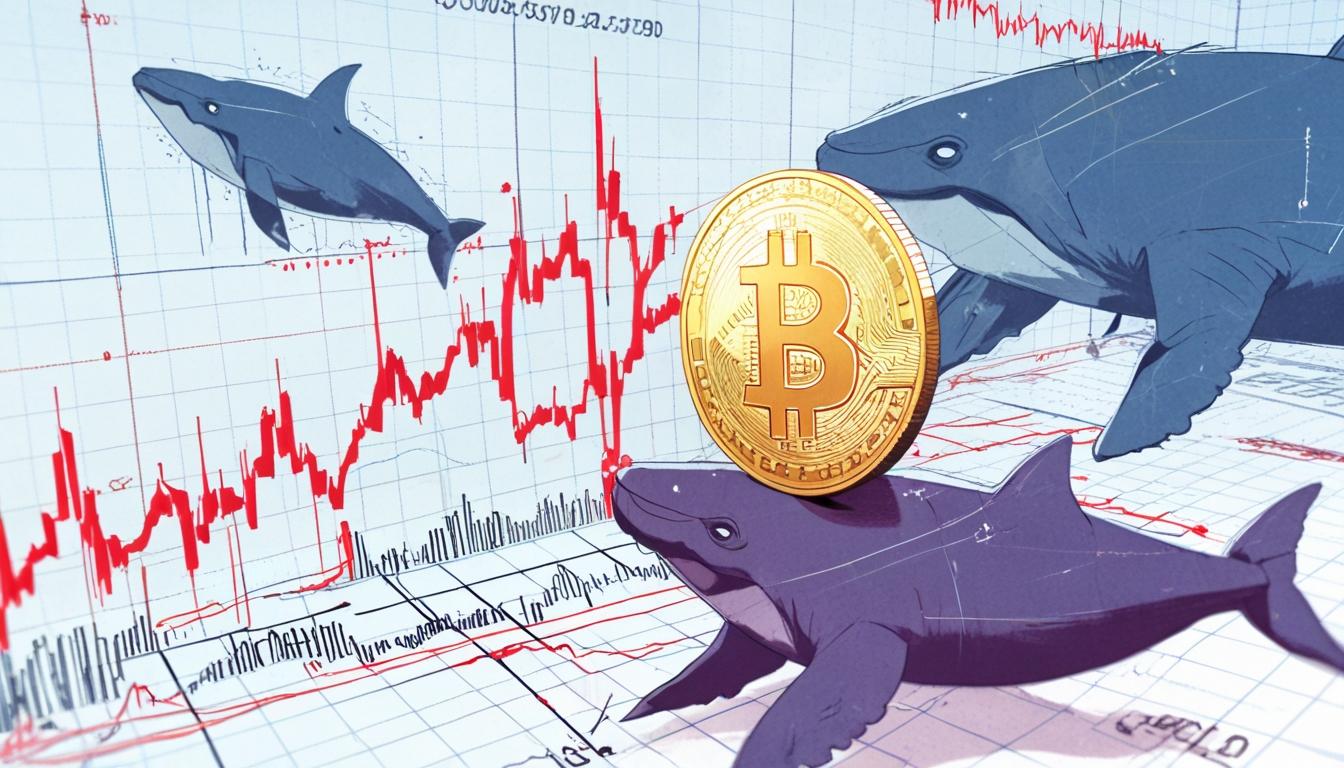The cryptocurrency market is witnessing notable volatility, with Bitcoin nearing key resistance points, while Ethereum adapts to new challenges amidst rising institutional interest.
The Cryptocurrency Market is currently experiencing significant volatility, marked by rapid price fluctuations that have left investors on edge. Bitcoin, the largest cryptocurrency, has recently come under scrutiny as it approaches key price levels, oscillating around the resistance point of $70,000. Despite concerted efforts from buyers to push through this critical barrier, strong selling pressure has resulted in a series of downturns, prompting questions among investors about the stability and future trajectory of Bitcoin. Notably, on-chain data indicates that large holders, often referred to as whales, are making contrasting moves as they accumulate Bitcoin, while many smaller investors respond to immediate market turbulence with panic selling.
The overall market sentiment is intensifying as Bitcoin prepares for a halving event, expected to occur in the coming months, which will see mining rewards cut in half, potentially creating a supply squeeze. Institutional interest in Bitcoin appears robust, with record inflows into Bitcoin Exchange-Traded Funds (ETFs) indicating a continued belief in the cryptocurrency’s long-term value despite current market challenges.
Ethereum, once hailed as Bitcoin’s strongest rival, faces its own set of challenges as its market dominance appears to be waning against emerging competitors like Solana and Polkadot. Nevertheless, Ethereum remains integral to the decentralised finance (DeFi) sector, non-fungible tokens (NFTs), and smart contracts. The recent transition to a Proof-of-Stake (PoS) consensus mechanism has been pivotal, significantly reducing energy consumption and establishing staking as an attractive income source for holders. However, persistent high gas fees have caused some projects to seek alternatives. Despite these hurdles, Ethereum continues to attract institutional adoption, bolstered by the development of Layer 2 scaling solutions, which might enable a resurgence in its market performance should support levels be maintained.
Meme coins have resurfaced in the market, driven by social media momentum and celebrity endorsements. Coins such as Dogecoin and Shiba Inu have experienced notable gains, often outpacing traditional cryptocurrencies with substantial returns in a relatively short timeframe. The meme coin category is also expanding with new entries like BONK and PEPE. These developments suggest a continued enthusiasm among retail investors for speculative trading, despite differing opinions on the long-term viability of such assets. Alongside meme coins, alternative coins linked to artificial intelligence and blockchain gaming are gaining traction, indicating diverse interests within the altcoin space.
Regulatory scrutiny is intensifying globally, with various jurisdictions enhancing their oversight of cryptocurrency markets. In the United States, the Securities and Exchange Commission (SEC) has been actively pursuing legal actions against notable crypto firms, a situation that could shape the future landscape of the sector. European regulators are advancing the Markets in Crypto-Assets (MiCA) framework aimed at structuring the market while Asia looks to create more favourable regulations to attract crypto businesses. A point of concern remains the potential designation of Ethereum as a security, which could impose additional regulatory constraints.
In stark contrast, the influx of institutional capital into the market is becoming increasingly pronounced. High-profile financial organisations such as BlackRock, Fidelity, and Goldman Sachs are no longer spectators; they are deeply engaged in investing and innovating within the cryptocurrency space, including through Bitcoin ETFs and exploring blockchain technologies. This shift towards institutional adoption is indicative of the maturing nature of the asset class and may pave the way for significant new investments, enhancing market stability in the long run.
As the market anticipates Bitcoin’s impending halving, alongside renewed focus on Ethereum’s developments and altcoins, the outlook for the remainder of 2024 remains a critical point of speculation. With factors such as macroeconomic conditions and regulatory frameworks likely to influence trends, observers are keenly awaiting the next phase of market evolution. The cryptocurrency sector remains dynamic, with the potential for both substantial growth and ongoing challenges as it navigates through its complex landscape.
Source: Noah Wire Services
- https://coinfomania.com/federal-reserves-impact-on-bitcoin-will-a-rate-cut-send-btc-to-200k-in-2025/ – This article supports the claim that Bitcoin’s price is influenced by macroeconomic factors, such as interest rates and institutional investment, which can impact its stability and future trajectory.
- https://www.riotimesonline.com/crypto-market-pulse-march-12-2025-recovery-and-volatility/ – This article corroborates the volatility in the cryptocurrency market, particularly Bitcoin’s recent price fluctuations and the impact of market sentiment on its performance.
- https://www.coindesk.com/learn/what-is-bitcoin-halving/ – This resource explains the concept of Bitcoin halving, which is expected to create a supply squeeze and potentially influence Bitcoin’s price dynamics.
- https://www.ethereum.org/en/developers/docs/consensus-mechanisms/pos/ – This page details Ethereum’s transition to a Proof-of-Stake consensus mechanism, which has reduced energy consumption and established staking as an income source for holders.
- https://www.sec.gov/news/press-release/2023-64 – This press release from the SEC highlights regulatory actions against crypto firms, reflecting the intensifying scrutiny of cryptocurrency markets in the United States.
Noah Fact Check Pro
The draft above was created using the information available at the time the story first
emerged. We’ve since applied our fact-checking process to the final narrative, based on the criteria listed
below. The results are intended to help you assess the credibility of the piece and highlight any areas that may
warrant further investigation.
Freshness check
Score:
8
Notes:
The narrative discusses current market trends and upcoming events like Bitcoin’s halving, indicating recent information. However, specific dates or recent events that could confirm its freshness are not mentioned.
Quotes check
Score:
10
Notes:
There are no direct quotes in the narrative, so there is no need to verify any quotes.
Source reliability
Score:
6
Notes:
The narrative originates from a Google News RSS feed, which aggregates content from various sources. Without a specific publication name, it’s difficult to assess reliability directly.
Plausability check
Score:
9
Notes:
The claims about market volatility, institutional interest, and regulatory scrutiny are plausible and align with current trends in the cryptocurrency sector. However, some specific details like the exact timing of Bitcoin’s halving or regulatory actions could not be verified.
Overall assessment
Verdict (FAIL, OPEN, PASS): OPEN
Confidence (LOW, MEDIUM, HIGH): MEDIUM
Summary:
The narrative appears to be generally plausible and discusses current trends in the cryptocurrency market. However, without specific sources or dates, it’s challenging to fully verify its accuracy or freshness. The lack of direct quotes simplifies the verification process, but the absence of a clear publication source affects reliability assessment.













